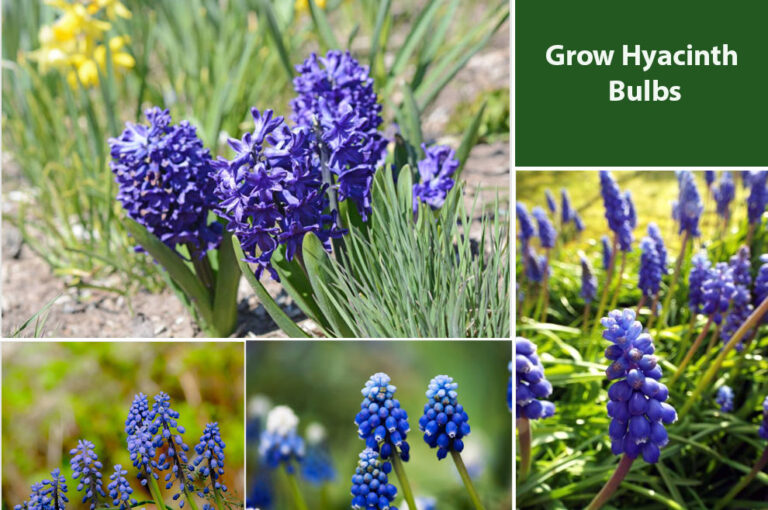The Best Time To Plant Hyacinth Bulbs For Beautiful Flowers

Table of Contents
Understanding Hyacinth Bulb Planting Seasons
Hyacinth bulbs are typically planted in the fall for spring blooms, but the specifics depend greatly on your climate. There's a difference between fall planting (for spring blooms) and spring planting (which may yield later blooms or smaller flowers, and is dependent on climate and variety).
- Fall planting provides the best results in most climates, giving the bulbs ample time to establish roots before the spring growing season. This leads to larger, more vibrant blooms.
- Spring planting is suitable in milder climates or for specific hyacinth varieties that don't require a long chilling period. However, expect smaller flowers and potentially a later bloom time.
- Your climate zone significantly influences the optimal planting time. Colder climates require earlier planting to allow for root development before winter's arrival.
- The ideal soil temperature for planting hyacinth bulbs is around 55-60°F (13-15°C). Planting too early in excessively warm soil can lead to premature sprouting, while planting too late might result in insufficient root development before winter.
Regional Planting Guides for Hyacinth Bulbs
The best Hyacinth Bulbs Planting Time varies considerably based on your location.
Planting Hyacinth Bulbs in Fall (Northern Climates)
In regions with cold winters, such as USDA Plant Hardiness Zones 3-6, the optimal planting window for hyacinth bulbs is generally between September and November.
- Ideal planting time: Aim to plant 6-8 weeks before the first expected frost.
- Soil preparation: Ensure your soil is well-draining. Amend heavy clay soils with compost or other organic matter to improve drainage and aeration.
- Planting depth and spacing: Plant bulbs 5-7 inches deep and 4-6 inches apart.
- Protection from frost: After planting, consider adding a layer of mulch (2-3 inches) to protect the bulbs from frost and harsh winter conditions. This insulation helps prevent them from freezing.
Planting Hyacinth Bulbs in Fall (Southern Climates)
In milder southern climates (USDA Plant Hardiness Zones 7-10), you can plant slightly later, typically between October and November, or even early December.
- Planting time: Pay close attention to local weather forecasts. Avoid planting too early if temperatures are expected to stay unusually warm.
- Considerations for warmer temperatures: Ensure adequate drainage to prevent rot in warmer, wetter conditions. You may need to adjust your mulching strategy to provide adequate cooling.
- Chilling period: Some hyacinth varieties might still need a chilling period for optimal flowering. Check the specific requirements of your chosen bulbs.
Spring Planting of Hyacinth Bulbs (Milder Climates)
Spring planting is an option in mild climates where the ground doesn't freeze deeply. Plant after the last expected frost, typically in early spring.
- Planting time: Aim for early spring, once the threat of frost has passed.
- Bloom size: Expect potentially smaller blooms compared to fall-planted bulbs.
- Suitable varieties: Certain hyacinth varieties are more suited to spring planting; check the packaging for guidance.
Preparing Your Hyacinth Bulbs and Planting Location
Proper preparation is key to successful hyacinth cultivation.
- Choosing healthy bulbs: Select firm, plump bulbs that are free from soft spots, mold, or damage. Avoid shriveled or damaged bulbs.
- Inspecting bulbs: Before planting, carefully inspect each bulb for signs of disease or pests. Discard any that show signs of damage.
- Location: Choose a sunny location or one with partial shade for optimal growth. At least 6 hours of sunlight per day is ideal.
- Soil preparation: Well-draining soil is crucial. Amend heavy clay soils with compost or other organic matter to enhance drainage.
- Enriching the soil: Incorporating organic matter, such as compost or well-rotted manure, enriches the soil and provides essential nutrients.
Aftercare for Planted Hyacinth Bulbs
Once planted, proper aftercare ensures healthy growth and vibrant blooms.
- Watering: Water regularly after planting, keeping the soil consistently moist but not waterlogged. Reduce watering frequency during winter dormancy.
- Mulching: Apply a layer of mulch (2-3 inches) to insulate the bulbs during winter, protecting them from frost and extreme temperature fluctuations.
- Fertilizing: While not strictly necessary, a balanced fertilizer applied in early spring can promote stronger blooms. Follow the fertilizer instructions carefully.
- Pest and disease control: Monitor for pests like rodents or diseases like fungal rot. Take prompt action if any problems arise using appropriate organic or chemical controls.
Conclusion
Successfully planting hyacinth bulbs hinges on understanding your specific climate and selecting the appropriate planting season. While fall planting generally provides the best results, understanding your climate zone and following the guidelines above are key to a successful planting. Remember to choose healthy bulbs, prepare your soil adequately, and provide proper aftercare. By following these tips, you'll be rewarded with a breathtaking display of vibrant hyacinth flowers. Plant your hyacinth bulbs at the optimal time for a spectacular spring display! Learn more about hyacinth bulb planting time and choose the perfect bulbs for your garden, ensuring beautiful blooms for years to come.

Featured Posts
-
 Schietincident Prinsenstraat Venlo Wat We Weten
May 29, 2025
Schietincident Prinsenstraat Venlo Wat We Weten
May 29, 2025 -
 Joan Mirs Disappointment Analyzing His Best Moto Gp Result Since India 2023
May 29, 2025
Joan Mirs Disappointment Analyzing His Best Moto Gp Result Since India 2023
May 29, 2025 -
 Living Fences Planning Planting And Maintenance
May 29, 2025
Living Fences Planning Planting And Maintenance
May 29, 2025 -
 Sevilla 0 2 Real Madrid Analisis Del Partido Y Reacciones Inmediatas
May 29, 2025
Sevilla 0 2 Real Madrid Analisis Del Partido Y Reacciones Inmediatas
May 29, 2025 -
 I Apoxorisi Toy Ilon Mask Apo Symvoyleytiko Organo Tis Kyvernisis Tramp
May 29, 2025
I Apoxorisi Toy Ilon Mask Apo Symvoyleytiko Organo Tis Kyvernisis Tramp
May 29, 2025
